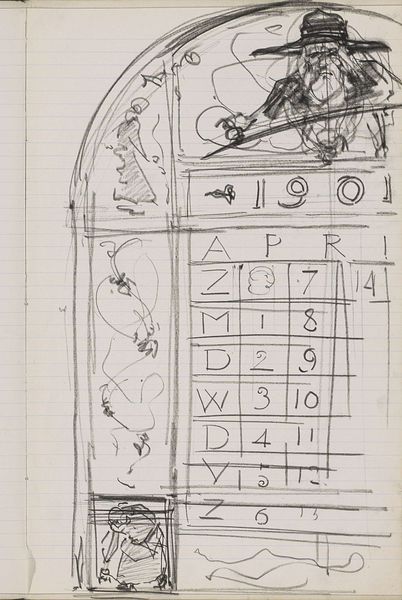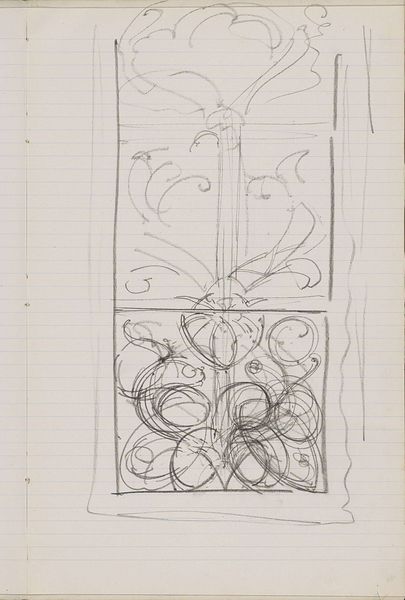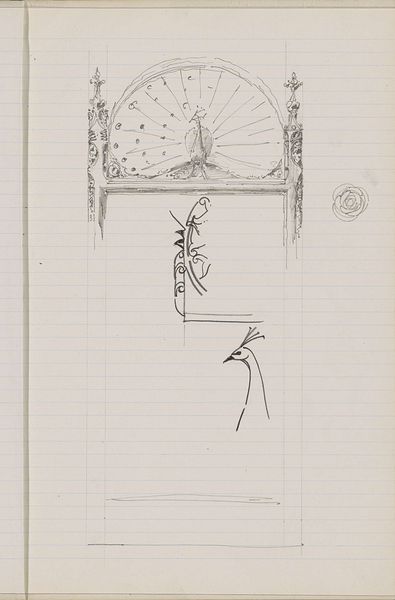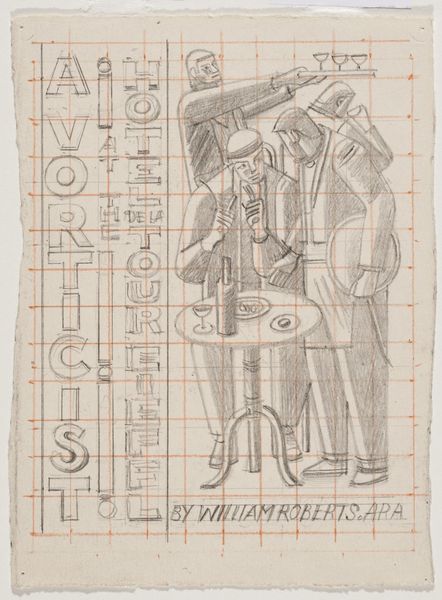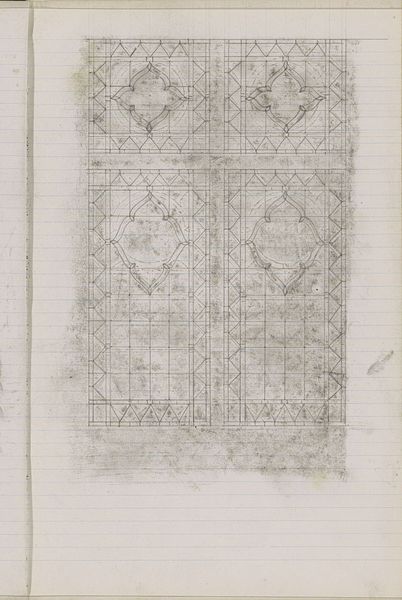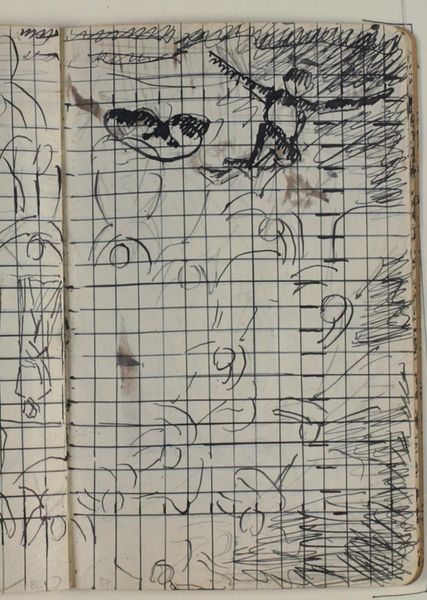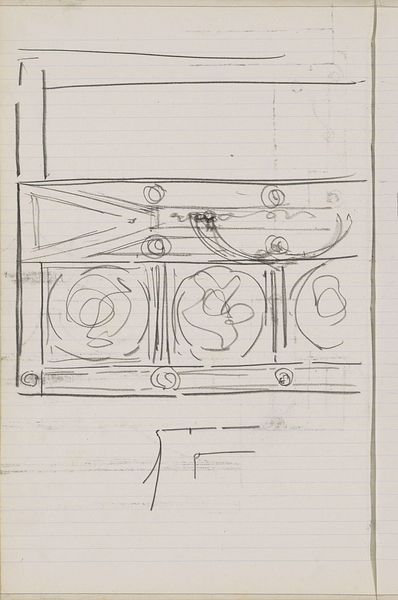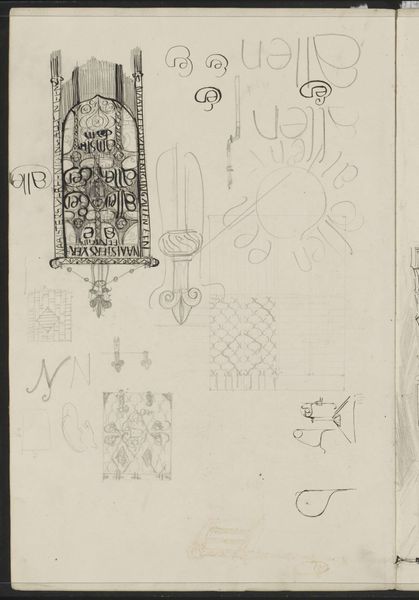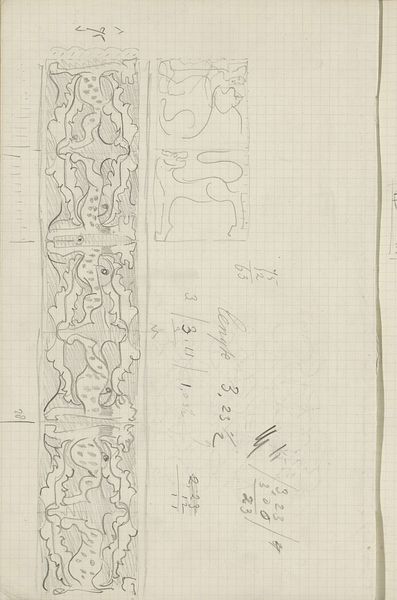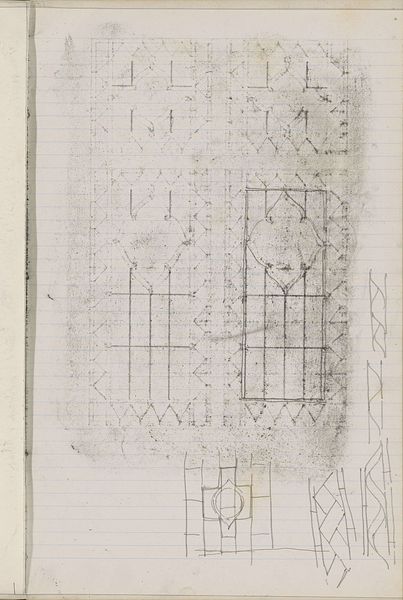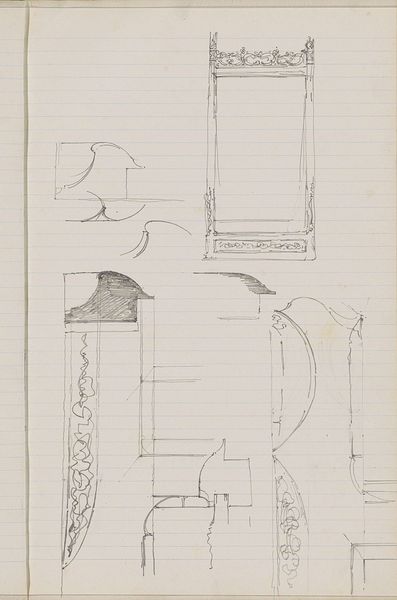
drawing, paper, pencil
#
drawing
#
art-nouveau
#
quirky sketch
#
sketch book
#
hand drawn type
#
landscape
#
paper
#
personal sketchbook
#
idea generation sketch
#
sketchwork
#
pen-ink sketch
#
pencil
#
abstraction
#
sketchbook drawing
#
sketchbook art
#
initial sketch
Copyright: Rijks Museum: Open Domain
Editor: This is "Ontwerp voor een kalender," a calendar design from around 1901 by Gerrit Willem Dijsselhof, rendered in pencil and ink on paper, here at the Rijksmuseum. The sketchiness gives it a casual, almost whimsical feel, but I can't quite grasp what the relationship between all its components is. What stands out to you? Curator: The primary structural element, undeniably, is the tension between the linear rigidity of the calendar grid and the organic, curvilinear forms surrounding it. Observe how the 'Januarius' heading establishes a horizontal plane, while the numerical grid meticulously divides the space. Dijsselhof then juxtaposes this with free-flowing lines and figures that appear to defy the calendar’s strict organization. Editor: I see what you mean. It’s almost as if the abstract shapes and figures are trying to escape the constraints of the calendar. Are those figures on the side supposed to be human? Curator: The forms certainly imply figuration, albeit in a highly stylized manner. Consider them less as representations of individuals and more as formal elements, contributing to the overall compositional rhythm. Do the sinuous curves on either side mirror the curved design in the artwork topping the page? What feeling does this formal resonance produce? Editor: That creates some cohesiveness... almost like parentheses for the whole image, like they're containing it! I see that now. The sketch atop the calendar now makes sense. This image feels less casual and more planned. I would never have noticed that connection by myself! Curator: Precisely! This piece exemplifies how formal analysis reveals underlying structural relationships that inform our understanding, wouldn't you agree? Editor: Definitely. Now I see how looking at the composition reveals connections between the work’s components, offering insights into the artist’s intention and choices. Thanks!
Comments
No comments
Be the first to comment and join the conversation on the ultimate creative platform.
